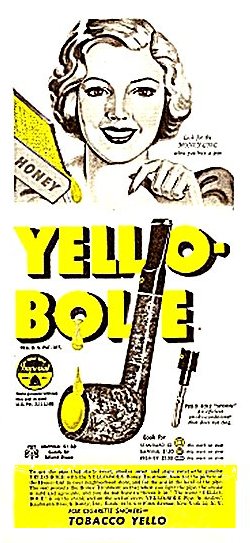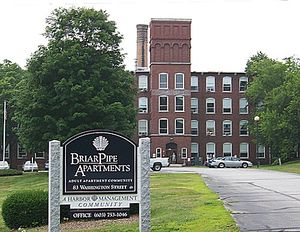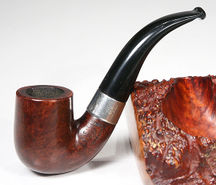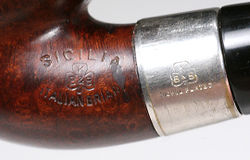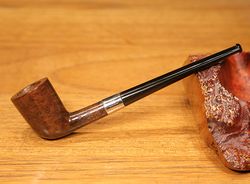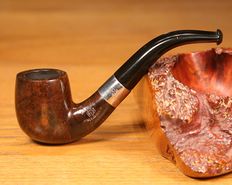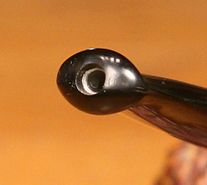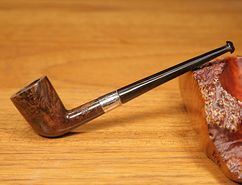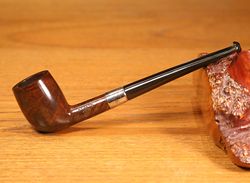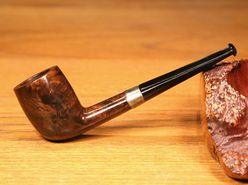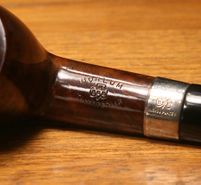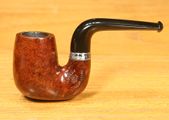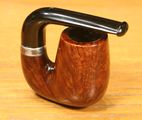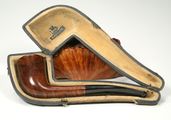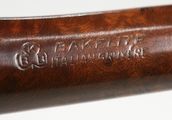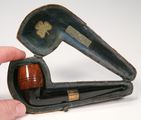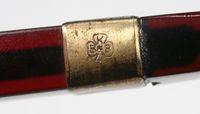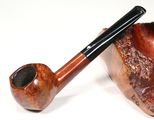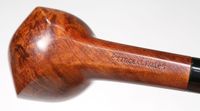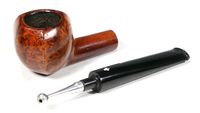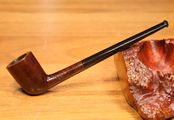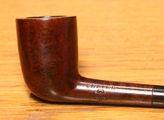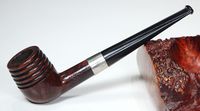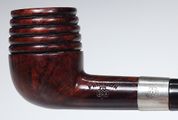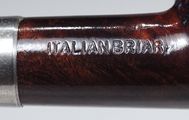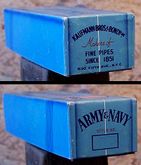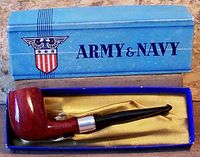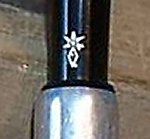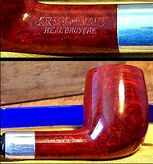Kaufmann Bros. & Bondy: Difference between revisions
No edit summary |
No edit summary |
||
| Line 21: | Line 21: | ||
In 1952, 101 years after the Kaufman brothers had opened a small pipe shop in the Bowery section of New York City, Kaufman Brothers & Bondy Company with all subsidiaries was purchased by an unknown company strange to pipe industry. (At least, the new owner was economical because the KB&B managers had to leave their luxurious bureaus on 630 Fifth Avenue, New York - the Rockefeller Center - for new rooms in the factory on 6400 Broadway, West New York.) This interlude ended after only 3 years in March of 1955, when '''[http://www.smfrankcoinc.com/ S.M. Frank & Co. Inc.]''' bought Kaufman Brothers & Bondy, The Kaywoodie Company, Reiss-Premier Corp., The New England Briar Pipe Co. and - of course - Yello-Bole. | In 1952, 101 years after the Kaufman brothers had opened a small pipe shop in the Bowery section of New York City, Kaufman Brothers & Bondy Company with all subsidiaries was purchased by an unknown company strange to pipe industry. (At least, the new owner was economical because the KB&B managers had to leave their luxurious bureaus on 630 Fifth Avenue, New York - the Rockefeller Center - for new rooms in the factory on 6400 Broadway, West New York.) This interlude ended after only 3 years in March of 1955, when '''[http://www.smfrankcoinc.com/ S.M. Frank & Co. Inc.]''' bought Kaufman Brothers & Bondy, The Kaywoodie Company, Reiss-Premier Corp., The New England Briar Pipe Co. and - of course - Yello-Bole. | ||
<gallery widths=250px heights=185px caption="Examples of KB&B Borlums, pre-Kaywoodie, which came with a tube inside the stem to make them 'Unbreakable', courtesy Doug Valitchka"> | |||
File:BorlumCantedDublin1.jpg|Canted Dublin | |||
File:BorlumFullBent1.jpg|Full Bent | |||
File:BorlumFullBent6.jpg|Full Bent detail | |||
File:BorlumShorterDublin1.jpg|Shorter Dublin | |||
File:BorlumSmallBilliard1.jpg|Small Billiard | |||
File:BorlumStubbyBilliard1.jpg|Stubby Billiard | |||
File:BorlumStubbyBilliard5.jpg|Stubby Billiard detail | |||
</gallery> | |||
<gallery widths=200px caption="Additional Early KB&B Examples and details, courtesy Doug Valitchka"> | |||
File:KBB Rotary1.jpg|KB&B Rotary | |||
File:KBB Rotary6.jpg|KB&B Rotary detail | |||
File:KBBBakelite01.jpg|KB&B Bakelite w/case | |||
File:KBBBakelite17.jpg|Bakelite nomenclature | |||
File:KBBBlueLine01.jpg|KB&B Blue Line | |||
File:KBBBlueLine10.jpg|KB&B Blue Line detail | |||
File:KBBPrinceOfWales01.jpg|KB&B Prince of Whales | |||
File:KBBPrinceOfWales07.jpg|KB&B Prince of Whales nomenclature | |||
File:KBBPrinceOfWales08.jpg|KB&B Prince of Whales stinger | |||
File:KBBSetter1.jpg|KB&B Setter | |||
File:KBBSetter5.jpg|KB&B Setter nomenclature | |||
</gallery> | |||
<gallery widths=200px caption="KB&B Franklin and details, courtesy Doug Valitchka"> | <gallery widths=200px caption="KB&B Franklin and details, courtesy Doug Valitchka"> | ||
Revision as of 22:44, 5 March 2017
Kaufman Brothers & Bondy
In 1932 Kaufman Brothers & Bondy (KB&B), est. 1851, expanded their programm consisting of KB&B pipes, Reiss-Premier and Kaywoodie as the mainstay brand by introducing the Yello-Bole line. Yello- Bole was designed as an outlet for lower grade briar not used in Kaywoodie production.
At that time KB&B produced their brands in Union City and in West New York, both New Jersey. Deviating from that, Yello-Boles were manufactured by The New England Briar Pipe Company in Penacook, New Hampshire to use this KB&B subsidiary to capacity.
As briar was hardly had during World War II, the KB&B Company embarked on a project of domestically grown briar wood, called Mission Briar or manzanita early in 1941. The Pacific Briarwood Company, a subsidiary founded for this purpose, began harvesting the burls growing on the slopes of the Santa Cruz Mountains of California. Though this wood is botanically the same as briar form the Mediterranean countries, the smoking characteristics were not quite as good and the project was abandoned after the war.
- Example and detail, courtesy Doug Valitchka
Was it for that reason? Advertising from the 1940's pictures the Yello-Bole "Honey Girl", who gently urges the pipe smoker to smoke the pipe with "a little honey in every bowl." In fact, honey was an ingredient of the material used to coat the inside of the bowl. It was said to provide a faster, sweeter break-in of the pipe.
In 1952, 101 years after the Kaufman brothers had opened a small pipe shop in the Bowery section of New York City, Kaufman Brothers & Bondy Company with all subsidiaries was purchased by an unknown company strange to pipe industry. (At least, the new owner was economical because the KB&B managers had to leave their luxurious bureaus on 630 Fifth Avenue, New York - the Rockefeller Center - for new rooms in the factory on 6400 Broadway, West New York.) This interlude ended after only 3 years in March of 1955, when S.M. Frank & Co. Inc. bought Kaufman Brothers & Bondy, The Kaywoodie Company, Reiss-Premier Corp., The New England Briar Pipe Co. and - of course - Yello-Bole.
- Examples of KB&B Borlums, pre-Kaywoodie, which came with a tube inside the stem to make them 'Unbreakable', courtesy Doug Valitchka
- Additional Early KB&B Examples and details, courtesy Doug Valitchka
- KB&B Franklin and details, courtesy Doug Valitchka
Brands:
- Ambassador — ?
- Army & Navy — ca. 1940's (?)
- Chesterfield — pat. in 1905
- Crosby --?
- Dinwoodie — introduced in 1919; discontinued < 1924
- Heatherby — ?
- Kaywoodie — introduced in 1919
- Franklin — ?
- Melrose — ?
- Samson — ?
- Yello-Bole — introduced in 1932
Please help to complete!
- You may also enjoying listening to Brian Levine's interview of S. M. Frank president, Bill Feuerbach, on the Pipes Magazine Radio Show
